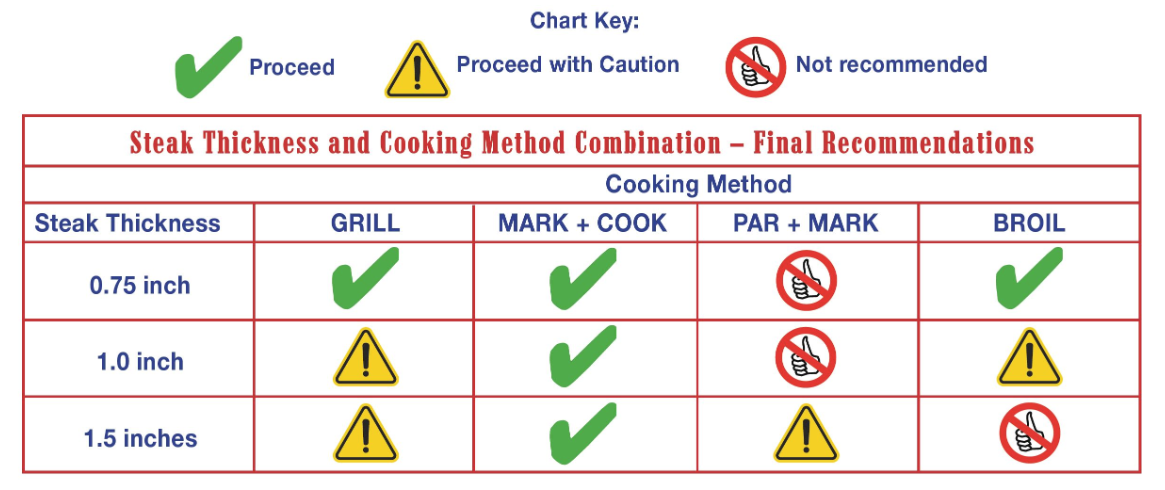FACT SHEET
Steak Thickness and Cooking Methods: Affect Consumer Perception of Beef Strip Loin Steaks Served in Foodservice
Increases in beef carcass and cut size have posed new challenges for the foodservice industry. Portion cutting of steaks from varying sized carcasses produces steaks of varying thickness that may cause inconsistencies in performance for chefs, and in the final product that the consumer receives.
The objectives of this checkoff study were to:
- Identify consumer preferences for steak thickness and foodservice cooking method.
- Collect mechanical measurements of steak tenderness and steak appearance as impacted by steak
thickness and cooking method.
- Create steak thickness and cooking method recommendations for the foodservice industry.
Methods
- Strip steaks of varying thicknesses (.75 inch, 1 inch and 1.5 inch) were cooked using 4 common
foodservice cooking methods:
- Grilled on an open-hearth, radiant-heat gas grill (GRILL);
- Grill marked then finished in a steam oven (MARK + COOK);
- Par-cooked in a steam oven and then grill marked (PAR + MARK); and
- Broiled in a salamander-style broiler (BROIL).
- Consumers sampled steaks and were asked to evaluate each steak thickness and cooking method
combination for tenderness, juiciness, flavor desirability and overall desirability.
- Mechanical measurements of tenderness and steak appearance measurements were collected for each
steak thickness and cooking method combination.
- Results/Recommendations were created based on consumer responses for overall desirability.
Results/Recommendations:
